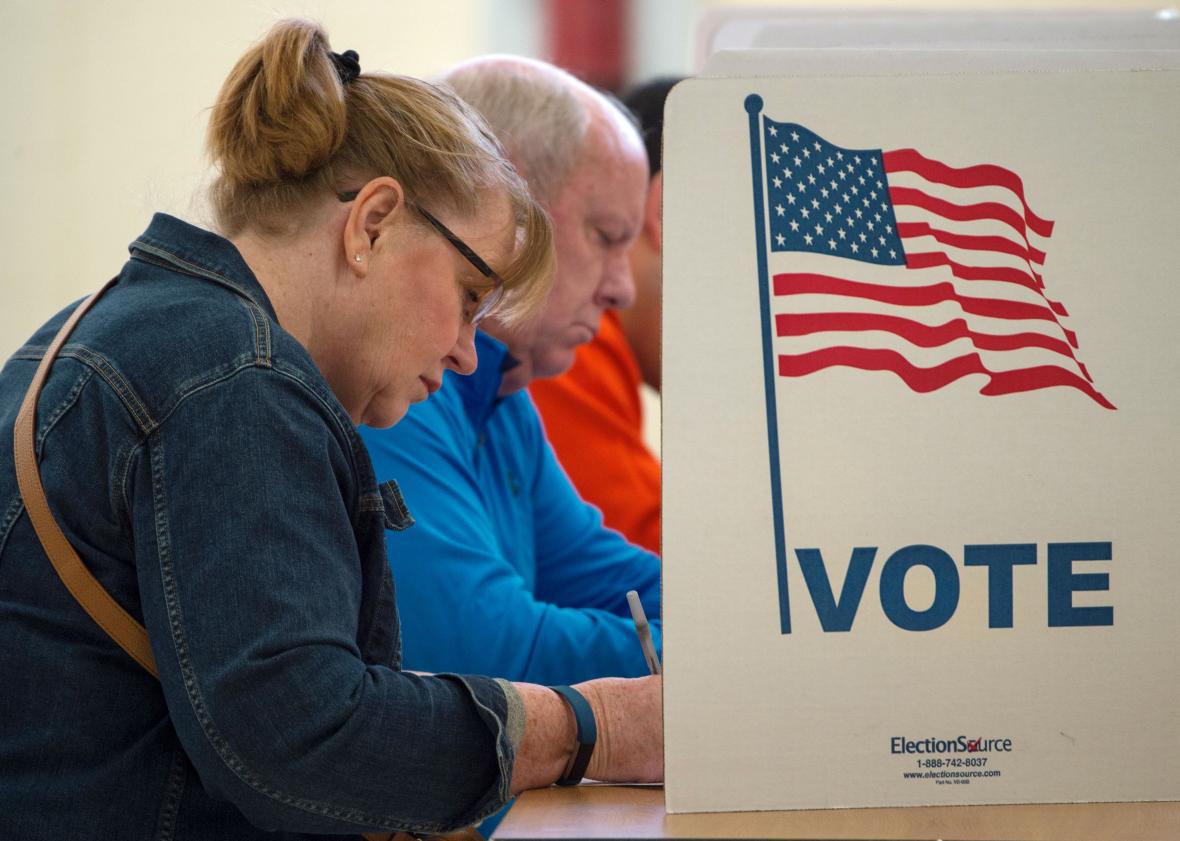A new analysis of November’s election published in the Washington Post on Monday suggests that Hillary Clinton’s performance was damaged by a significant decline in turnout among black voters, especially in a few high-stakes states. From the Post:
Black turnout declined dramatically; white turnout increased noticeably; and Latino and Asian American turnout went up even more. In the key swing states of Michigan, Wisconsin, and Pennsylvania, those shifts were especially strong. How strong? Without those shifts in turnout from various racial and ethnic groups, these pivotal states might have gone not to Trump but to Clinton—giving Clinton an electoral college victory.
According to Demos’ Sean McElwee, UMass–Amherst’s Jesse Rhodes and Brian Schaffner, and Indiana University’s Bernard Fraga, black turnout declined by 4.7 points from 2012 nationally while white turnout increased by 2.4 points. Crucially, the drop in black turnout was even sharper in states where the margin of victory was less than 10 points than it was nationally—in those battleground states, black turnout dropped 5.3 points. In two critical states that swung to Trump—Michigan and Wisconsin—black turnout dropped by just more than 12 points. Declines were less dramatic but significant in other swing states Trump carried: Ohio (down 7.5 points), Florida (4.2), and Pennsylvania (2.1). White turnout declined modestly in each of those swing states but Florida and Pennsylvania, where it increased by 3.5 points and 5.2 points respectively. Clinton lost each of those swing states but Ohio by a margin of less than 2 points.
The researchers found that, as many predicted, Hispanic turnout increased significantly—by 3.8 points nationally. Asian turnout also increased nationally by 3 points. Both groups skew Democratic. But neither boost was enough to save Clinton.
The researchers found that at 2012 levels of turnout among all racial groups, Clinton probably would have won the election with very narrow victories in Wisconsin, Michigan, and Pennsylvania. Those states are important outliers: “In 12 of the 15 battleground states this past election,” they write, “2012 turnout rates would have made no difference in who won.”
As many analysts have pointed out since the election, turnout only partly explains Clinton’s loss. It is clear that Trump managed to convert a significant number of Obama voters, especially among the white working class in the aforementioned swing states. But it seems equally clear that higher black turnout could have blunted the impact of those losses and might have even put Clinton over the top.
Of note: Voting laws aimed at depressing minority turnout were in effect in Wisconsin and Ohio in 2016 but not 2012. On the other hand, black voters didn’t face new restrictions in Pennsylvania, Michigan, and Florida, while a New York Times dispatch from late November suggests that a lack of enthusiasm played an important role in depressing black turnout in Wisconsin and elsewhere. Sabrina Tavernise paid a visit to Milwaukee’s majority-black District 15, where turnout declined by almost 20 percent from 2012:
At Upper Cutz, a bustling barbershop in a green-trimmed wooden house, talk of politics inevitably comes back to one man: Barack Obama. […] All four barbers had voted for Mr. Obama. But only two could muster the enthusiasm to vote this time. And even then, it was a sort of protest. One wrote in Mrs. Clinton’s Democratic opponent, Senator Bernie Sanders of Vermont. The other wrote in himself.
Barber Jahn Toney told Tavernise that no president in his lifetime, including Obama, had significantly improved the lives of black people. “It’s like I should have known this would happen,” he said. “We’re worse off than before.” Toney wrote in Bernie Sanders.
